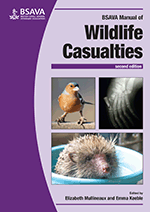
Full text loading...

Red foxes are highly resourceful and have an opportunistic diet, which allow them to occupy a wide variety of rural and urban habitats. Common reasons for the presentation of foxes as wildlife casualties include orphaned and abandoned cubs, trauma and sarcoptic mange; red foxes are also a reservoir for several important diseases of humans and domestic animals, including rabies and tapeworm. This chapter covers: ecology and biology; anatomy and physiology; capture, handling and transportation; clinical assessment; first aid and hospitalization; anaesthesia and analgesia; specific conditions; therapeutics; husbandry; rearing of fox cubs; rehabilitation and release; and legal considerations.
Foxes, Page 1 of 1
< Previous page | Next page > /docserver/preview/fulltext/10.22233/9781910443316/9781910443316.21-1.gif

Full text loading...








